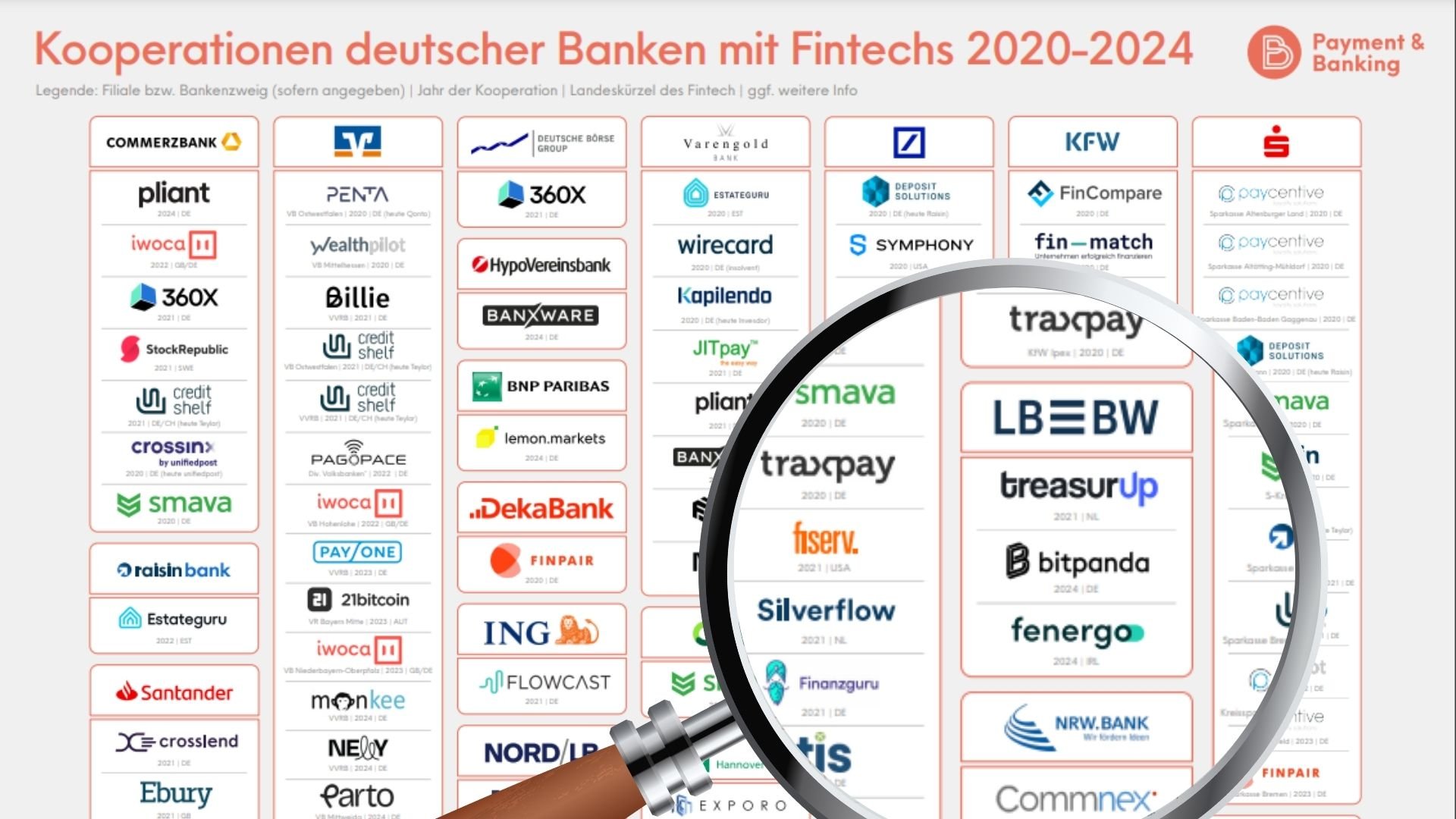Facebook positioniert sich als Finanzdienstleister
Derzeit herrscht viel Bewegung im Zahlungsverkehr, nicht nur durch die gestiegenen Volumina bei bargeldlosen Zahlungen ausgelöst durch Covid-19, sondern auch durch die Diskussion rund um digitale Währungen. Mitunter gestartet wurde diese Diskussion von der Libra Association im Juni 2019, welche von Internetgiganten wie Facebook, Spotify, Uber, Shopify und Lyft ins Leben gerufen wurde. Erklärtes Ziel von Libra ist es, eine globale Finanzinfrastruktur und unimodales Zahlungssystem zu schaffen, welches Milliarden Menschen Zugang zu Finanzdienstleistungen gibt, v.a. in sogenannten Underbanked Nations, also Ländern ohne funktionierendes Bankensystem.
Diese privatwirtschaftliche und konsortiale Initiative hat eine öffentliche Diskussion angeregt, da sie einen signifikanten Einfluss auf die Geldpolitik haben könnte und den globalen Zahlungsverkehr neu sortieren würde. Zentralbanken weltweit arbeiten seitdem unter Hochdruck an eigenen Lösungen für digitale Währungen, sogenannte Central Bank Digital Currencies (CBDC). Wird Libra den Zentralbanken den Rang ablaufen? Welche Rolle werden Banken im Zahlungsverkehr der Zukunft spielen? Wird es am Ende einen Gewinner geben oder ein Nebeneinander unterschiedlicher Lösungen für unterschiedliche Anwendungsfälle?
Konten und Zahlungen – wo ist der Zusammenhang?
Zuerst drängt sich sicherlich für viele Leser die Frage auf, welche Innovation Libra, CBDCs und andere digitale Währungen tatsächlich mit sich bringen, da es ja heute bereits problemlos möglich ist digital zu bezahlen, sei es via Smartphone oder gar Smartwatch. Grundsätzlich müssen wir unterscheiden zwischen Währungen und Zahlungsdienstleistungen. Das Zahlen mit dem Smartphone hängt immer von der Infrastruktur der Bank ab.

Auch wenn die Kreditkarte hinterlegt ist, wird am Ende gegen das Konto bei der Bank abgerechnet. Das bedeutet, die Zahlungsdienstleister stellen lediglich den Marktplatz, sind aber an die Akzeptanz der Banken gebunden. Angewandt auf die perspektivische „Whatsapp Zahlung“ oder „von Smartphone zu Smartphone“ bedeutet dies, dass Kartenanbieter keine Beträge begleichen können. Um das zu ermöglichen, muss das Bankkonto hinterlegt sein, welches eine Überweisung (Forderung gegen die Hausbank) löst. Für eine „Whatsapp Zahlung“ wären also Echtzeit-Überweisungen mit automatischem Clearing notwendig. Mit SEPA Instant Credit Transfer (SCT-Inst) sollte entsprechend eine Zahlungsinfrastruktur geschaffen werden, welche Beträge in Echtzeit (ca. 10 Sekunden) begleicht und eine direkte Wertstellung beim Kundenkonto ermöglicht.
Problem ist hierbei neben den horrenden Kosten für den Umbau des Kernbankensystems und einen 24/7/365 Tage Betrieb der technischen Infrastruktur auch, dass das Angebot nur durch dritte Dienstleister (Payment Service Provider) in den Markt getragen werden kann. Bei Whatsapp Zahlungen wäre dies Facebook, bei Smartphone Zahlungen die einschlägigen Anbieter (Apple, Android, usw.). Das bedeutet, dass die Banken die Kosten für den Umbau ihres Kernbankensystems amortisieren müssen, wobei Drittanbieter davon am meisten profitieren werden, da sie ihren Kunden ein weiteres Feature anbieten können.
Der Konsument im Fokus (B2C Payments)
Banken haben im Vergleich zu Fintechs wie N26, Klarna, Transferwise und Co. den Zugang zum Endkonsumenten größtenteils verloren und befürchten bei der anhaltenden Niedrigzinspolitik, eine weitreichende „Verkümmerung“ zu Clearingstellen und Custody Providern für Kunden-fokussierte „digital native“ Unternehmen. Der Versuch der Banken mittels SCT-Inst wieder näher an den Kunden zu rücken, hat sich als Herkulesaufgabe erwiesen und bringt leider nicht den gewünschten Erfolg, da die Kosten für den Umbau nicht amortisiert werden können.
Mit Libra kommt nun ein weiterer Wettbewerber ins Spiel, welcher nicht nur ein eigenes Zahlungssystem anbietet, sondern auch noch die kritische Maße an Nutzern mitbringt, um dies als Standard zu etablieren. Die Reichweite einer Whatsapp Zahlung, mit welcher man seine Amazon Rechnung begleichen und gleichzeitig beim Café um die Ecke das Stück Kuchen zahlen kann, lässt sich nur erahnen. Entsprechend stehen PayPal, Mastercard und Co. unter Druck ein besseres Angebot auf dem Markt zu platzieren. Nachdem Libra allerdings nicht den Euro als Währung in Frage stellt, sondern lediglich ein neues Zahlungsnetzwerk dazu bereitstellt, können Banken die Marktdynamik hier entspannt beobachten, da es an ihrer Funktion als Gatekeeper der Kundenkonten und Settlements nichts ändert.
What about business? (B2B und Corporate Payments)
Viel spannender ist nun aber die Frage, was im B2B Umfeld passieren wird. Der Zahlungsverkehr bei B2B wurde jahrelang eher stiefmütterlich behandelt und besteht zu großen Teilen aus der klassischen SEPA Überweisung. Vereinzelt kommen noch Firmenkreditkarten für Einzelpersonen zum Einsatz; das Lastschriftmandat spielt eine geringe Rolle. Die Geschäftskunden verlangen aber nach neuen Zahlungsoptionen, was schon allein das Durchstarten des Startups Billie im Bereich Factoring zeigt.
Weiterhin arbeiten viele deutsche Industriehersteller an der nutzungsbasierten Abrechnung ihrer Produkte (Pay-per-Use) anstelle des reinen Verkaufs, um in Silicon-Valley Manier an Monthly Recurring Revenue Streams (wiederkehrende Zahlungsströme) zu verdienen. Das öffnet Banken neue Märkte und Geschäftsmodelle. Aus Sicht der Bank muss man sich nun die Frage stellen, wie man diesen Markt bespielen möchte. Einerseits kann man mittels der geschaffenen SEPA Inst Infrastruktur diese Nachfrage bedienen, überlässt aber die Kundenschnittstelle wieder „Payment Service Providern“ ohne echten Mehrwert und neuem Geschäftsmodell.
„Aus Sicht der Bank muss man sich nun die Frage stellen, wie man diesen Markt bespielen möchte.“
Zusätzlich läuft man Gefahr, dass Drittanbieter mit programmierfähigen Zahlungen den Markt schnell übernehmen. Die zweite und lukrativere Möglichkeit für Banken wäre das Nutzen einer digitalen Währung für den direkten Zahlungsausgleich und die Integration in die Kundensysteme. Auf diese Weise erhalten sie eine aktive Rolle im Zahlungsverkehr und sind auch das Gesicht zum Kunden. Diese Option bietet Banken also ein komplett neues Geschäftsmodell und schlägt eine Brücke zwischen Industrie 4.0 und Finanzdienstleistungen.
Status Quo – Was ist eigentlich Geld?!
Aus den oberen Absätzen geht hervor, dass der eigentliche Kontenausgleich und das damit verbundene Geld, der „Causus Knacksus“ ist. Mit einer digitalen Währung, die programmierbare Zahlungen ermöglicht, können Banken wieder eine aktive Rolle im Zahlungsverkehr und vor allem im noch nicht erschlossenen B2B Markt spielen. Doch welche Formen von Geld nutzen wir heute bereits und wie kann die Lösung für eine digitale Währung inkl. programmierbarer Zahlungen aussehen?
- Zentralbankgeld existiert in zwei Formen: zum einen als von der Notenbank geschaffenes Bargeld, das zugleich gesetzlich garantiertes Zahlungsmittel ist, zum anderen als Zentralbankguthaben der Geschäftsbanken. Zentralbankguthaben entstehen zum Beispiel, wenn die Zentralbank einer Geschäftsbank einen Kredit gewährt oder Vermögenswerte wie bspw. Staats- oder Unternehmensanleihen kauft.
- Geschäftsbankengeld (auch Buch- oder Giralgeld) ist nicht nur an der Geldmenge gemessen die praktisch wichtigste Art von Geld, sondern ist elementarer Bestandteil der kreditbasierten Geldschöpfung durch die Geschäftsbanken. Es entsteht außerhalb des unmittelbaren Wirkungskreises der EZB und stellt (lediglich) einen Anspruch des Kunden gegenüber der Bank dar. Somit taucht Geschäftsbankengeld nur in den Büchern der Banken auf und wird durch eine Mindestreserve der Geschäftsbanken bei der Zentralbank gedeckt. Diese Art von Geld ist die Grundlage des bargeldlosen Zahlungsverkehrs (Stichwort: Überweisung), stellt allerdings kein staatliches Zahlungsmittel dar.
Wie wird Geld digital?

Zentralbank- und Giralgeld liegen zwar in elektronischer Form vor, sind aber nicht digitalisiert. Dieser kleine aber feine Unterschied wird noch besser im Englischen deutlich. Hier gibt es zwei Begriffe für das Wort „Digitalisierung“: digitalization und digitization. Digitalization beschreibt die Verwendung digitaler Technologien, um vormals analoge Prozesse in der digitalen Welt abzubilden.
Zum Beispiel werden analoge Zahlungsvorgänge (Barzahlungen) durch unser heutiges Zahlungssystem digitalisiert (Überweisungen). Dadurch sind Wertüberträge in digitaler Form und somit über weite Distanzen problemlos und effizient durchführbar. Das Geld selbst ist aber nicht digitalisiert, bzw. „digitized“. Digitization beschreibt die Umwandlung von analog zu digital; ein physisches Dokument kann bspw. durch ein Textverarbeitungsprogramm in ein digitales Dokument transformiert werden. Mithilfe von Distributed Ledger Technologie[AB1] , (also verteilten Datenbankstrukturen), kann nun auch erstmals Geld selbst digitalisiert und in Tokenform verfügbar gemacht werden. Bitcoin und die zugrundeliegende Blockchaintechnologie waren hier der Vorreiter.
Wie kann es nun gelingen den Euro zu digitalisieren? Grundsätzlich ist dies sowohl für Zentralbankgeld als auch Giralgeld möglich. 80 % der Zentralbanken weltweit arbeiten an einer digitalen Zentralbankwährung (CBDC). In China wird der digitale Yuan bereits getestet und auch die EZB hat sich im Oktober erstmals zu einer Euro CBDC geäußert. Der Fokus bestehender CBDC Konzepte liegt auf der Bereitstellung von digitalem Bargeld für Endnutzer. Es soll also in erster Linie der B2C-Anwendungsfall bedient werden.
Somit wartet der interessantere B2B-Anwendungsfall weiterhin auf eine Lösung. Hier bietet sich eine Möglichkeit für den Bankensektor und das Giralgeld. Erste Versuche Giralgeld zu digitalisieren wurden bereits durch Zuhilfenahme der E-Geld-Lizenz unternommen. Allerdings haben E-Geldtoken einen großen Nachteil: Sie sind nicht multibankfähig und auch nicht skalierbar. Ein E-Geldtoken von Bank A wird für gewöhnlich nicht bei Bank B akzeptiert. Und selbst wenn dies der Fall wäre, entsteht noch ein weiteres Problem: Token, die von unterschiedlichen Banken ausgegeben werden sind nicht fungibel. Das liegt daran, dass der Herausgeber des E-Geldes für dieses haftet. Wenn Bank A vertrauensvoller ist als Bank B, kann es passieren, dass die E-Geld-Token der beiden Banken einen Wechselkurs zueinander haben und somit auch keinen 1-zu-1 Peg zum (Zentralbank-)Euro. Dies würde dazu führen, dass plötzlich verschiedene „Euros“ existieren, vergleichbar mit den unterschiedlichen USD Stablecoins wie USDT, USDC, usw.
Dieses Fungiblitätsproblem lässt sich lösen, indem alle Banken dazu verpflichtet werden 100 % ihrer Tokens mit Zentralbankreserven zu besichern und auf Treuhandkonten bei der EZB zu halten. Das Kreditrisiko wird somit praktisch eliminiert und ein 1-zu-1 Peg zum Euro garantiert. Dieses Konzept, bei dem es sich im Endeffekt um einen von Banken emittierten Stablecoin handelt, wird vom Internationalen Währungsfonds (IWF) und der Bank für Internationalen Zahlungsausgleich (BIZ) als synthetische oder indirekte CBDC (sCBDC) bezeichnet.

Eine sCBDC bringt auch einige weitere Vorteile gegenüber einer CBDC mit sich. Dadurch dass es sich bei einer sCBDC um einen Token von der Privatwirtschaft handelt, können die relativen Stärken privater Unternehmen ausgespielt werden. Dazu zählen Innovationskraft, Agilität und Effizienz. Des Weiteren ergeben sich geringere volkswirtschaftliche Risiken als bei einer CBDC, da der monetäre Kreislauf gesamtheitlich betrachtet wenig Veränderung erfährt. Ähnlich wie beim heutigen Giralgeld oder Buchgeld, passiert die faktische Geldschöpfung auf Ebene der Geschäftsbanken. Bei einer sCBDC wird lediglich die zugrundeliegende technische Infrastruktur geändert, wobei die Risiken durch die Bindung an das Zentralbankgeld überschaubar sind.
Letztlich ist die größte Hürde bei dieser Lösung, dass sich die Geschäftsbanken auf einen technischen Standard einigen müssen, welcher von allen Teilnehmern akzeptiert wird, um Multibankfähigkeit und Skalierung zu erreichen. Sobald dieser technische Standard gesetzt wurde, steht innovativen Geschäftsmodellen im B2B-Bereich, wie zum Beispiel Pay-per-Use, nichts mehr im Wege. Durch den Schulterschluss zwischen Banken und der Industrie entstehen neue Geschäftsmodelle. Dies bietet eine einmalige Chance für Europa beim Thema Digitalisierung auf globaler Ebene wieder wettbewerbsfähig zu werden.
Quelle:
[AB1]https://wirtschaftslexikon.gabler.de/definition/distributed-ledger-technologie-dlt-54410







